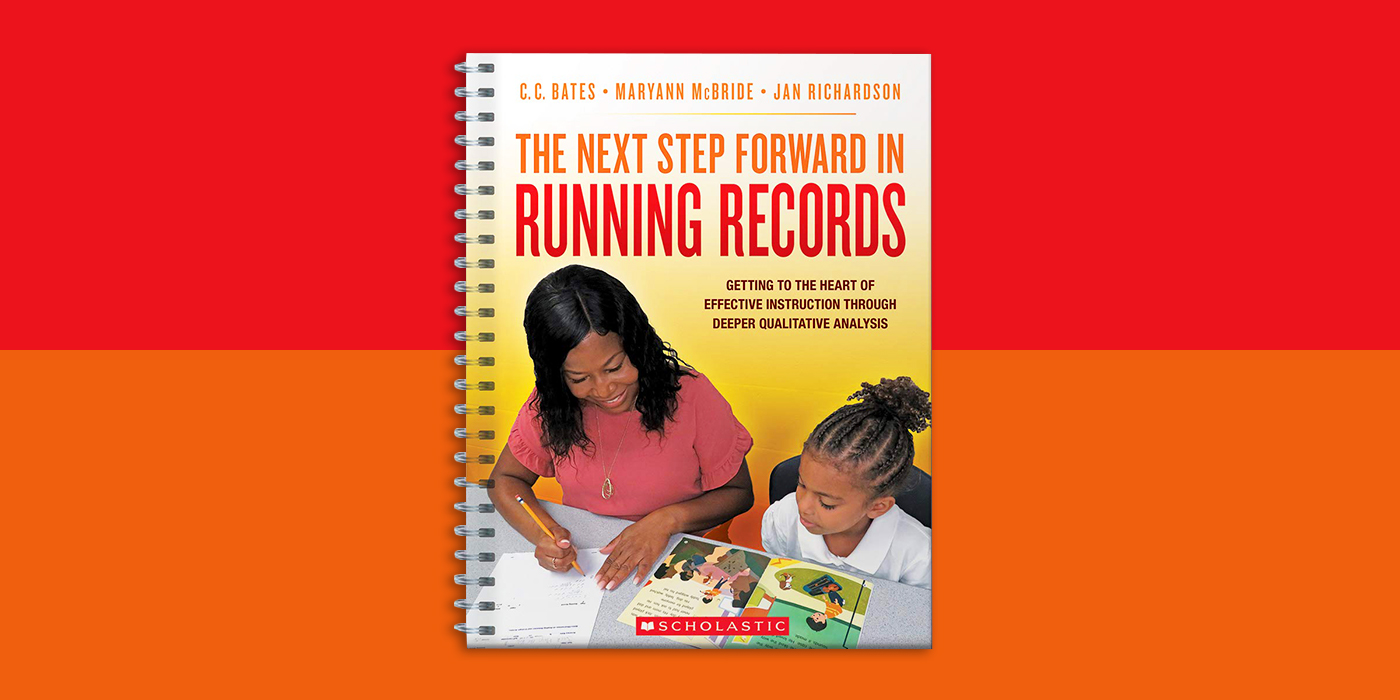Learning from children begins with systematic observation of them (Clay, 2001). Running records enable us to capture and analyze our observations of children’s reading behaviors in the moment, using a standard set of codes (see chart below). When we take them, we observe where and when the reading work is going smoothly for children and where and when it isn’t. We observe what they have under control and what they find confusing. Our observations, captured in running records as a permanent record, provide a unique view into how a child processes continuous text and help us determine our next steps for instruction.
In our book, The Next Step Forward in Running Records, we explore how taking running records using a familiar text supports students’ strategic reading behaviors and how analyzing them can inform individual, small-group, and whole-class instruction. Running records begin the instructional cycle, so it is important to figure out how they fit in your daily routine.
Here are two things to consider:
Be efficient with your time.
Running records can be taken during an individual conference or small-group instruction. When you take them during small-group instruction, have other students work independently while you quickly take a record on one child. This can occur before, during, or at the end of the lesson. To avoid interruptions such as, “I am finished. Now what?” think carefully about what you give the other children to read while you take the record. It may be wise to have the children read a text at their independent level so they will not require your assistance. You could also engage them in some type of writing extension inspired by a text they’ve read, such as a retelling in words and pictures—or a response to a favorite character. Keep in mind that efficient use of time is a major consideration when taking running records in a classroom setting. If the children in the group get restless, they will require your attention, and you may need to put the record aside and return to it later.
Limit length of each record.
Another option for taking a running record during small-group instruction is to limit the length of each record. For example, after taking a record on Child 1 for 2–3 pages, you would take a record on Child 2 reading 2–3 pages. Because the children are reading simultaneously but not chorally, they are going to finish at different rates. So, it’s okay to have the group reread the book if you are still taking a record on a child. However, don’t ask the children to read it more than twice because they will likely become impatient, which can lead to behavior challenges—be sure to wrap things up quickly.
For children who are just learning to read or who are reading books that contain fewer than 100 words, take the record on their reading of the complete text. As they begin reading longer, more complex fiction, you may want to carefully select a 100-word excerpt that captures the gist and meaning of the story as accurately as possible. For nonfiction, select a 100-word excerpt that communicates information about a concept or idea.
With practice, you will increase your proficiency in taking running records and decrease the amount of time it requires. To learn more about using running records as a tool to support the readers in your classroom, you can purchase our book here.
About the Authors:
C.C. Bates is an Associate Professor of Literacy Education and a Reading Recovery trainer at Clemson University. Her experiences as an elementary teacher and reading interventionist, coupled with her continued teaching of children having difficulty learning to read and write, serve as the foundation for her work with teachers and coaches nationwide.
Maryann McBride is a clinical faculty member and Reading Recovery teacher leader in residence at Clemson University. Her years as an elementary classroom teacher, reading specialist, and staff developer have focused on teaching young children who have the most difficulty learning to read. She continues to provide instruction to individual children and support teachers.
Jan Richardson has transformed guided reading for tens of thousands of teachers and students. She works with schools, helping educators understand what’s needed to ensure that every student succeeds in reading. Jan’s work is informed by her experience as a reading specialist, Reading Recovery teacher leader, staff developer, and teacher of every grade.

